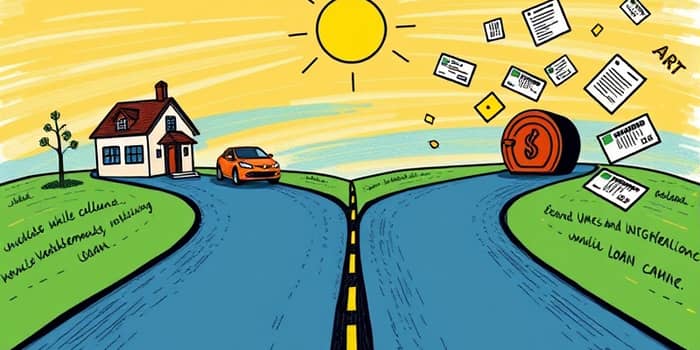
In today’s ever–evolving financial landscape, personal loans serve as a beacon of hope for individuals seeking to consolidate debt, cover emergencies, or fuel dreams like home improvements and small business ventures. Yet, the pivotal question remains: should you pledge an asset as collateral, or pursue an unsecured option? This comprehensive guide unpacks each path, blending data, real–world examples, and expert advice to help you make an informed choice with confidence.
A secured personal loan requires you to back the borrowed funds with an asset—whether a home, vehicle, savings account, or valuable collectibles. By offering collateral, you provide lenders with a tangible safety net. If you default, they can seize the pledged property to recover losses.
Borrowers often gravitate toward secured loans for significantly larger loan amounts at noticeably lower interest rates. This arrangement can open doors even for those with less–than–perfect credit, granting access to credit lines that might otherwise be out of reach.
However, the benefits come with stakes. The process demands extensive documentation and appraisal, and carries the looming possibility of potential loss of pledged assets if repayments slip. A clear understanding of risks and responsibilities is crucial before taking this step.
In contrast, unsecured personal loans hinge solely on your creditworthiness, income, and financial history. No asset sits in limbo during the term, meaning you won’t risk a home or car if payments fall behind. This structure resonates with borrowers who value protect your hard-earned assets above all else.
Without collateral, lenders face higher risk and typically compensate with higher interest rates and fees and smaller loan amounts. Yet for those with a a solid credit history and steady income, unsecured loans offer swift approvals, minimal paperwork, and the freedom to use proceeds however they see fit.
Whether you lean secured or unsecured, five pillars determine your approval odds:
Secured applications also follow specific steps: document and verify your collateral, undergo professional appraisal, and sign a lien agreement. Unsecured loans bypass asset valuation but weigh your credit profile more heavily—and may require co-signers if credit is marginal.
As of mid-2025, 24.6 million Americans carried $253 billion in personal loan debt, with around 25% of balances secured by assets. The median balance stood at $4,198, and average monthly payments hovered near $202. Data from Q1 2025 reveal stark contrasts by credit tier:
Nearly 77% of outstanding balances rest with banks and credit unions, with the remainder held by finance companies. This distribution underscores the prevalence of both secured and unsecured offerings across institutions.
Choosing between secured and unsecured loans ultimately hinges on your unique financial portrait. If you value lower payments and have an asset you can comfortably pledge, a secured loan might be the ticket to unlocking significant funds at attractive rates. Conversely, if safeguarding your property outweighs all else, and you maintain a strong credit profile, an unsecured option provides peace of mind and simplicity.
Regardless of path, practice due diligence: shop rates, read fine print, and confirm all fees and prepayment penalties. By arming yourself with knowledge and a clear repayment plan, you’ll navigate the process smoothly and confidently.
The road to financial empowerment is paved with informed choices. Whether you pledge collateral or not, understanding the full spectrum of risks and rewards ensures you take steps aligned with both your goals and your peace of mind. Embrace this journey as an opportunity to strengthen your credit, achieve your aspirations, and secure a brighter financial future.
References













